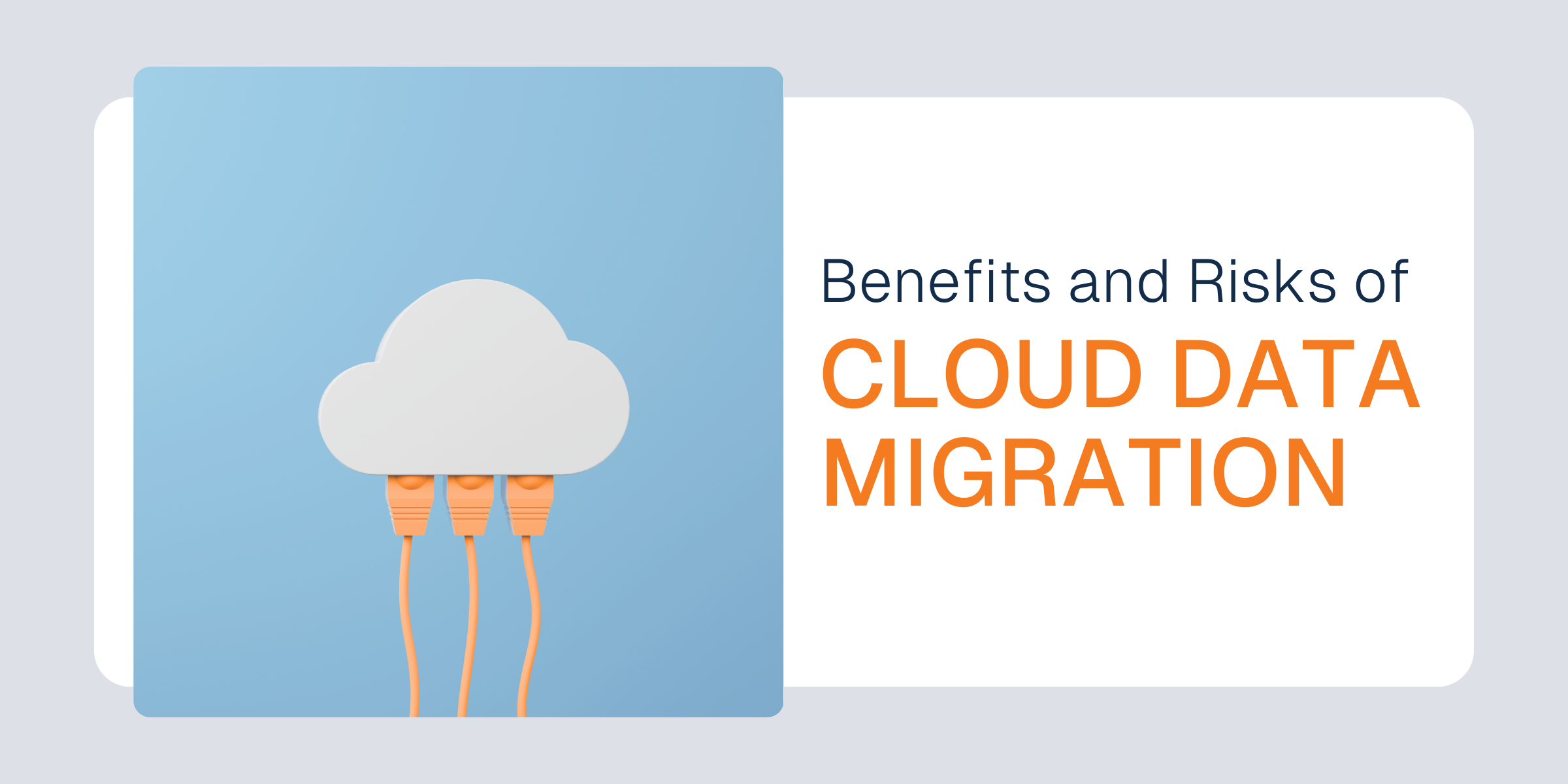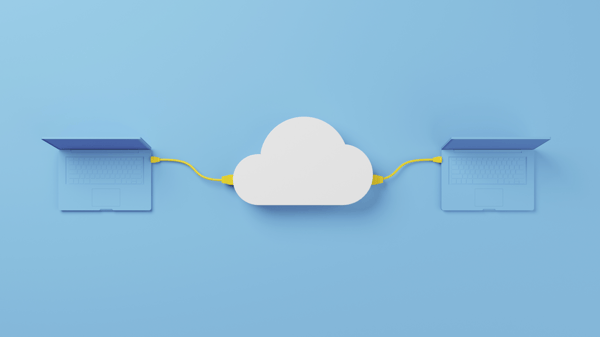4 min read
Balancing the Benefits and Risks of Cloud Data Migration
Written by: Ashley Johnson - April 10, 2024

The rapid growth of cloud computing has made it an increasingly attractive option for businesses looking to modernize their data storage and management infrastructure. Moving from on-premises systems to cloud-based solutions offers a range of advantages, including improved scalability, enhanced collaboration, and reduced maintenance overhead. However, as organizations embrace the cloud, they must also navigate a new set of data security challenges.

Understanding the Appeal of Moving Data to the Cloud
The decision to migrate data to the cloud is often driven by the promise of greater flexibility, cost savings, and accessibility. Cloud platforms allow businesses to rapidly scale their storage and computing resources to meet fluctuating demands, without the need for significant upfront investments in on-premises hardware. Additionally, cloud-based collaboration tools enable teams to securely share and access data from anywhere, fostering improved productivity and streamlined workflows.
Top Five Data Security Risks Associated with Cloud Migration
While the benefits of cloud migration are compelling, businesses must also be aware of the potential data security risks that come with this transition. Here are the top five data security risks associated with migrating data from an on-premises storage system to a cloud-based system:
1. Data Breaches: One of the primary concerns with cloud data storage is the risk of unauthorized access and data breaches. Malicious actors may target cloud-based systems, exploiting vulnerabilities in the underlying infrastructure or compromising user credentials to gain access to sensitive information.
For example, in 2017, the online marketing firm Alteryx experienced a data breach due to a misconfigured AWS S3 bucket, exposing data from millions of households. “There’s no sign that the Alteryx data fell into the wrong hands, but this kind of vulnerability remains a problem for the IT industry”, according to Dan O’Sullivan, an analyst with Mountain View, California based UpGuard.
2. Data Loss: Cloud environments can introduce new challenges in maintaining the integrity and availability of data. Accidental deletion, hardware failures, or even natural disasters can lead to the loss of critical information if proper backup and recovery procedures are not in place. A recent Cloud Security Report by Synopsys found that 64% of cybersecurity professionals cited data loss and leakage as their top cloud security concern.
3. Compliance and Regulatory Challenges: Businesses operating in highly regulated industries, such as healthcare or finance, must ensure that their cloud data storage solutions comply with industry-specific regulations and data privacy laws, such as HIPAA or GDPR. Failure to meet these compliance requirements can result in hefty fines and reputational damage.
4. Insider Threats: The cloud's ease of access and collaboration features can also introduce risks from within the organization. Disgruntled employees or malicious insiders may exploit their privileged access to steal or tamper with sensitive data. In 2019, a former Amazon employee was charged with hacking into Capital One's cloud-based servers and stealing the personal information of over 100 million customers.
5. API Vulnerabilities: One of the key data security risks associated with migrating to a cloud-based system is the potential vulnerability of the APIs (Application Programming Interfaces) used by cloud-based applications. Cloud-based applications often utilize APIs to facilitate the exchange of data and enable seamless integration between different systems and services. These APIs serve as the backbone of cloud-based ecosystems, allowing for the efficient flow of information and the automation of various business processes. However, this heavy reliance on APIs also introduces a significant security risk if they are not properly designed and secured.
During a data migration from on-premises systems to the cloud, the risk of data loss, corruption, or inconsistencies is a significant concern for businesses. TimeXtender and Exmon, when used together, provide a robust framework and set of tools designed to mitigate these risks and safeguard data throughout the migration process.
A Foundation for Secure Data Migration
TimeXtender offers a metadata-driven data management platform that automates and streamlines the process of data migration. Here's how TimeXtender protects your data:
Automated Data Integration: By automating the extraction, transformation, and loading (ETL) processes, TimeXtender reduces the risk of human error, a common cause of data loss during manual data handling.
Metadata Management: TimeXtender uses metadata to manage data migrations, which means it tracks and documents the origin, transformation, and destination of each data element. This visibility ensures that no data is lost or overlooked during migration.
Incremental Load Capability: For large datasets, TimeXtender supports incremental data loads, moving only new or changed data after the initial migration. This approach minimizes the risk of data loss by ensuring that the migration process does not have to restart from scratch in the event of a failure.
Enhancing Data Integrity and Compliance
Exmon by TimeXtender complements TimeXtender by focusing on data quality and governance, crucial aspects during a cloud migration:
Data Quality Checks: Exmon performs automated data quality checks before, during, and after the migration. By identifying and rectifying inaccuracies or duplications early, Exmon ensures that only clean, reliable data is migrated to the cloud.
Data Governance and Compliance: Exmon provides tools to manage data governance policies and compliance requirements throughout the migration process. This includes tracking data lineage and maintaining audit trails, which are essential for verifying data integrity and adherence to legal and regulatory standards.
Joint Benefits for Cloud Migration
Reduced Downtime: By streamlining the migration process and minimizing manual interventions, TimeXtender and Exmon reduce the downtime associated with data migrations. Businesses can continue their operations with minimal interruption.
Scalability: Both tools are designed to scale with your data needs. As your data volume grows or as you adopt more cloud services, TimeXtender and Exmon can accommodate these changes without compromising data integrity or security.
Future-Proofing: Post-migration, TimeXtender and Exmon facilitate a cloud environment where data remains centralized, well-governed, and of high quality. This positions businesses well for future data initiatives and cloud advancements.
By leveraging TimeXtender for efficient and automated data migration processes, paired with Exmon for data quality and governance, businesses can confidently migrate their on-premises data to the cloud while mitigating the risks of data loss, ensuring compliance, and maintaining the integrity of their valuable data assets. Schedule a meeting with one of our expert partners today to see how fast and easy it can be to get started.
TL;DR: Transitioning to cloud computing presents various advantages like scalability and improved collaboration for businesses, but it also introduces significant data security risks. Challenges include potential data breaches, data loss, navigating complex compliance requirements, insider threats, and API vulnerabilities. TimeXtender and Exmon offer a seamless data migration and governance solution, reducing the risk of data issues and ensuring integrity and compliance. To confidently move and manage your data in the cloud, reach out for a personal demo or explore our pricing plans for a smooth, secure transition.


